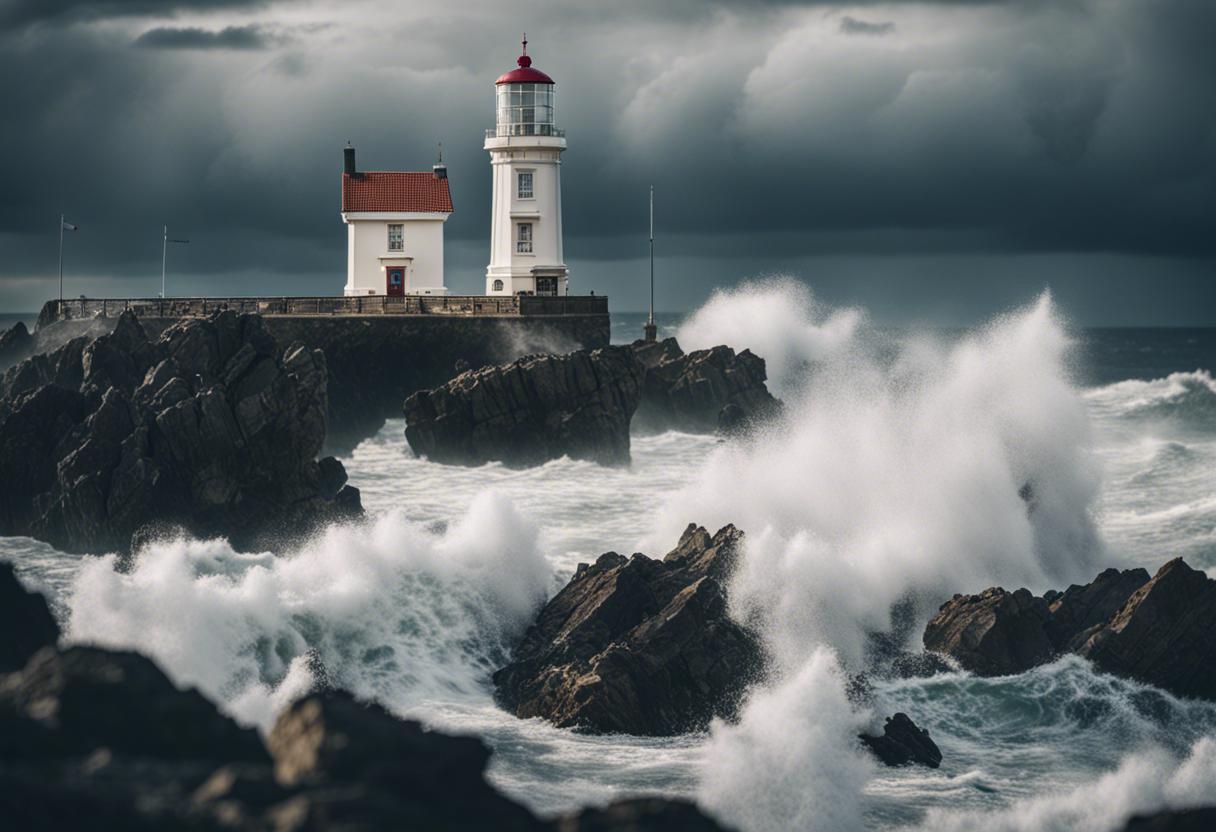Ireland’s lighthouses have served as steadfast symbols of respite for oceanic voyagers for hundreds of years, also garnering mystery and intrigue among those on terra firma. Recollections of his time at the Blackrock lighthouse in County Mayo are vivid for Eugene O’Sullivan, from his youth.
In those days, the sole way to reach the lighthouse was via a currach, a small boat, as the tempestuous and capricious nature of the ocean made it too hazardous for larger vessels. The single route onto and off the currach involved gripping a rope that was shuttled back and forth. On one occasion, on a December 18th, O’Sullivan and another lighthouse keeper made a safe landing, carrying with them two live ducks intended for their Christmas feast. One of the departing colleagues, however, was so overjoyed about his impending time off that he mistimed his exit and ended up in the water.
O’Sullivan recounts with a chuckle how the postbag on the gentleman’s back was the only visible sign of him, trailing in the water as he sank, followed by his bobbing hat. The man resurfaced, spouting colourful language at the person responsible for his unplanned plunge.
Nonetheless, his luck was better than that of the ill-fated ducks, who didn’t survive their expedition. Having been fed corn for a week, the ducks had become more like cherished pets than Christmas dinner. O’Sullivan reminisces about the grim task of ending the birds’ lives, as it was a case of no ducks, no feast.
Serving as the final official lighthouse keeper at Baily on Howth Head before complete automation in 1997, O’Sullivan reflects on his career. It was a family tradition, with both his brothers, Donal and Hugh, and his father, DJ, a poet whose work was recognised by Austin Clarke and a nature writer for the Irish Press for four decades, entered the service. The tradition runs back to DJ’s father and grandfather, with the family history spanning back to the 1800s.
O’Sullivan shares an interesting tidbit about his great-grandfather, who was stationed on Rathlin Island and served as a gunner in the British military. The navy established a fog signal on the island in 1866 that utilised an 18lb gun to alert ships every 20 minutes amidst thick fog. An explosives-fuelled signal replaced this simple setup in 1918.
His grandfather served as a lighthouse keeper on the Bull Rock, situated off the western coast of Co Cork. Unfortunately, he drowned while fishing in 1917. At that time, DJ O’Sullivan, only 11, was the eldest of five children left behind. His mother was compelled to vacate the lighthouse keeper’s residence within three weeks to make room for the replacement’s family. They were left with virtually nothing.
His earliest lighthouse related memory is tied to the scent of paraffin oil, used to fuel the lighthouse’s lights prior to the advent of electricity. He recollects this from a visit to his father who was based at Inishowen.
In a manner similar to DJ, who captured the beauty of these places in his poetry, Eugene harbours an affection for Inishtrahull Island, just north of Malin Head. He fondly remembers its serene environment, abundant gardening space, and the pleasing comradery of seabirds.
He didn’t serve in the lighthouses with his father or brothers but remembers their shared stories of magnificent lighthouses like Fastnet, Eagle Island, and Inishtearaght Lighthouse on the Blasket islands.
He reminisces about how challenging it was to board and disembark from the Blaskets islands and had to travel about 40 miles from Castletownbere by boat.
The introduction of helicopters and deep freezers were revolutionary and greatly improved their living conditions in the service.
The boat ride to some of the more remote lighthouses, particularly those situated on unstable cliffs or sharp, uninviting rocks, was a cause of concern for O’Sullivan. However, once settled in the lighthouse, he asserts there was no fear. He does recount an incident at Aranmore Island in Co Donegal when a particularly furious sea broke their windows while he was enjoying coffee with another keeper, but assures such incidents were a rarity.
O’Sullivan fondly recalls his time spent on Tory Island while posted in Co Donegal. During his time there, he would take long, solitary strolls as the island’s residents typically slept during daytime and only emerged at night.
He formed a close bond with local fisherman James Dixon, who embarked on a painting career in his later years. Some of his art pieces now grace the Hugh Lane Gallery in Dublin and also make part of the Arts Council’s collection. O’Sullivan also had associations with acclaimed British-born artist Derek Hill, a summer resident on Tory Island, who is rumoured to have given Dixon encouragement and inspiration.
According to O’Sullivan, Dixon would refuse gifted painting equipment, choosing instead to craft his own paintbrush using a donkey’s tail. He admits with great pride that he owns several of Dixon’s artworks.
O’Sullivan, never having settled down with a partner, says he never felt a sense of loneliness during his six-week assignments at the lighthouses. However, he can empathize with other men, whose families were not living with them, as it may have been a challenging life. He believes that one can feel more lonely even in a crowd.
He took the duties of ensuring the passing ships’ safety seriously, which could sometimes be stressful. During winters, he would keep detailed logs and worry about fishing boats that dipped into troughs, anxiously watching until they were no longer visible. In their initial days, there were neither radios nor telephones in the lighthouse.
As his tenure concluded, O’Sullivan felt a sense of profound sadness marking the end of an age. He points out that like many other lighthouse families, his family too had a longstanding history of service. “I remember thinking this must be 150 years since my family began their service in the lighthouses,” he reflects.

